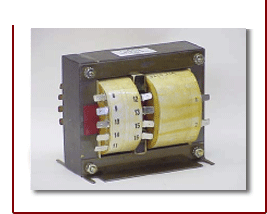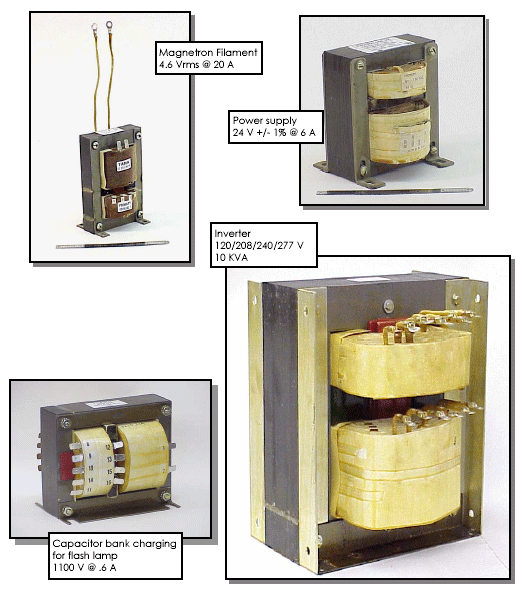|
Ferroresonant Transformers are designed to achieve regulation with non-linear operation. They provide line regulation, reduce harmonics, and are current limiting.
A conventional transformer has a ratio of turns between the primary and secondary windings, which are magnetically coupled on a common core. When a voltage is applied across a primary winding, a magnetizing current establishes the primary flux in the core. The primary flux links the secondary and induces a voltage in the secondary windings proportional to the turns ratio. When
|
|  |
|
a load is connected across the secondary winding, the secondary current produces a secondary flux which tends to cancel the primary flux. The primary current increases to maintain the original flux level.
Conventional transformers are designed to operate on the linear portion of the magnetization curve, below the “knee”.
There is no method for the regulation of the output against changing input voltages in a conventional transformer.
A basic ferroresonant transformer consists of a core, a primary winding, two secondary windings (one for the load and one for the capacitor) and a magnetic shunt that separates the primary and secondary windings.
When a voltage is applied to the primary winding the secondary voltage increases as the primary voltage increases. As the primary voltage increases the secondary voltage continues to increase up to a point of discontinuity, or secondary resonance, where an abrupt increase, about 20 %, in secondary voltage occurs. The resonance effect immediately increases the secondary flux density and causes saturation of that portion of the core. This partial core saturation is the key to the magnetic design of the Ferroresonant Transformer.
The voltage induced in the capacitor winding by the primary flux causes a capacitive current to flow. The flux due this current is in phase with the primary flux. This flux addition occurs in the secondary portion of the core. The increased flux saturates the portion of the core on the secondary winding only. The primary portion of the core is operating below saturation or below the “knee” of the magnetization curve.
The magnetic shunt provides a path for the imbalanced flux of the primary and secondary by allowing a portion of the primary flux to return to the primary winding without coupling the secondary. At the same time, it allows the secondary flux to return to the secondary winding without coupling the primary.
A change in the input voltage causes the magnetization current to change and produces a proportional flux change. Because of the capacitor and magnetic shunt, the secondary magnetic circuit is operating above the “knee” in the flat portion of the magnetization curve, and the output flux change is reduced. This allows the output voltage to be very insensitive to changes of the input. An attenuation of 10 to 1 is normally achieved or approximately 1% for a 10% change in the input.
Load regulation will be higher because of the inherent internal regulation of the transformer.
Ferroresonant Transformers are inherently self-protected against short circuits, and are able to supply large surge currents if required because of the large amount of energy stored in the secondary circuit.
The disadvantages of a Ferroresonant Transformer are:

|
|


